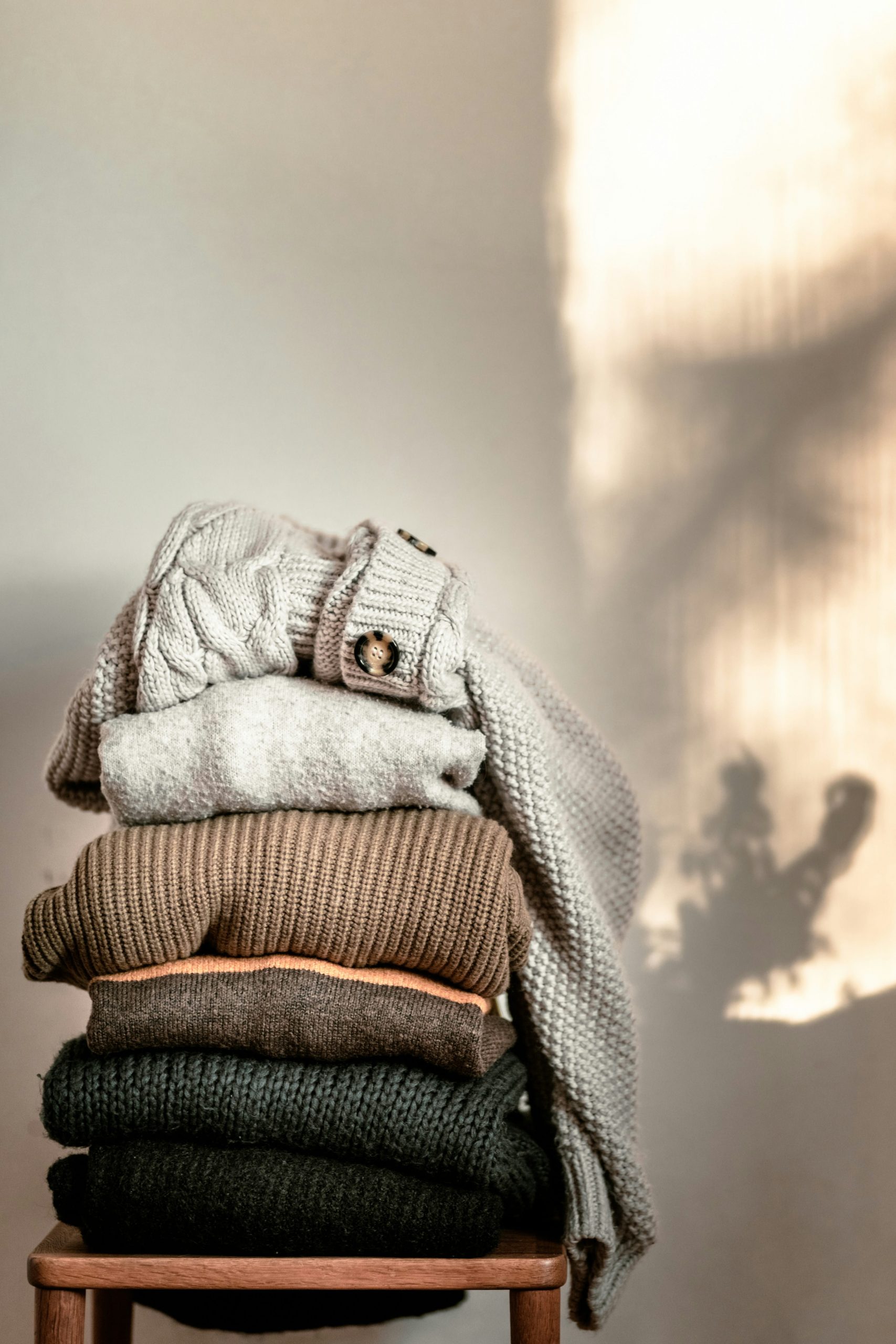Commonly used wool material
Wool is the most common type of wool and usually comes from sheep, alpacas, and other stuffed animals. Wool fibers are thin and curved, trapping air between the fibers and providing excellent warmth. Its fiber is tough and durable, not easily worn or deformed. It is also widely sourced and can be obtained from different sheep species around the globe.
Cashmere is a high-grade fiber that comes from the down of mountain sheep and fine wool sheep. Cashmere fiber is very fine, extremely soft, suitable for making lightweight and warm clothing. Its texture is very soft and smooth to the touch, known as “oro suave”. Cashmere usually comes from the mountainous regions of Asia and South America and is therefore relatively rare and expensive.
Lamb wool is the fiber from young sheep, lamb wool fiber is softer and finer than the fine wool of adult sheep, and its clothing is very light, but the warmth is not inferior to other wool. Because of its softness, lamb wool is often used to make clothing suitable for babies and sensitive skin.
Different types of wool have their own unique characteristics and are suitable for different clothing and uses. Choosing the type of wool that suits your needs will help ensure that your garment performs well in terms of both comfort and warmth. Whether you’re looking for cashmere with a luxurious feel or looking for soft lamb wool for babies, wool fibers offer a variety of options.
Blended fiber material
Fiber blending has become an important innovation and production technology in the textile industry. Blending refers to mixing two or more different types of fiber materials together to create a new textile. This blend can produce a range of unique effects and advantages, making blended fibers popular in a variety of applications.
For example, blending cotton with wool has excellent temperature regulation properties. Wool is known for its excellent warmth retention, while cotton has good air permeability. Mixing them together can achieve a balance of temperature that provides insulation in cold weather while maintaining breathability in warm weather and keeping the wearer comfortable. This blend is particularly useful when making fall and spring clothing, as it can be adapted to different climatic conditions.
The blended fiber also has better durability and maintainability. The strength and wear resistance of wool, combined with the softness and careability of cotton fibers, make this blend fiber able to withstand the test of daily wear and cleaning without deformation or pilling easily. This means that the wearer can enjoy the comfort and beauty of the garment for a long time.
The blending ratio of blended fibers can be adjusted according to specific needs. Different mixing ratios can produce different effects. For example, more wool can increase warmth retention, while more cotton can improve air permeability. This flexibility allows manufacturers to adjust the blend ratio according to the design and use of the garment to meet the needs of customers.
Synthetic fiber material
Synthetic fibers play a vital role in the modern textile industry. Among them, acrylic and nylon are two popular synthetic fibers, and there is a significant contrast between them and natural fibers. This article will give an in-depth introduction to the characteristics and advantages of these two synthetic fibers, as well as their extensive use in various fields.
Acrylic is a synthetic fiber that is often similar in appearance and texture to wool, but is often more affordable. It has excellent warmth retention and its ability to fight cold is excellent, which makes acrylic often used to make winter clothing, such as sweaters and scarves. Compared to wool, acrylic has better wrinkle resistance, is less prone to deformation, and is easier to maintain. In addition, acrylic has a rich choice of colors and dyeing capabilities, making it easy for designers to create colorful and diverse fashion styles.
Nylon is another important synthetic fiber, known for its wear resistance and robustness. Nylon is a lightweight but strong fiber commonly used to make durable sportswear, socks, bags and outdoor appliances. Nylon has higher tear and wear resistance compared to natural fibers, so it is widely used in products that need to withstand strict conditions of use. In addition, nylon also has excellent elasticity, can hold the shape, and low moisture absorption, fast drying performance is good, so it is particularly popular in outdoor sports and outdoor equipment.
The contrast between synthetic fibers and natural fibers clearly demonstrates their advantages in terms of warmth retention, durability and versatility. Whether used in fashion design, outdoor equipment or everyday items, synthetic fibers bring new possibilities to the textile industry and meet the demand for high-performance, high-quality textiles.

 English
English Deutsch
Deutsch Français
Français Italiano
Italiano Español
Español Русский
Русский Polski
Polski Nederlands
Nederlands Svenska
Svenska
